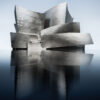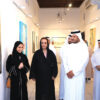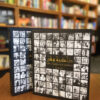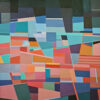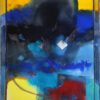
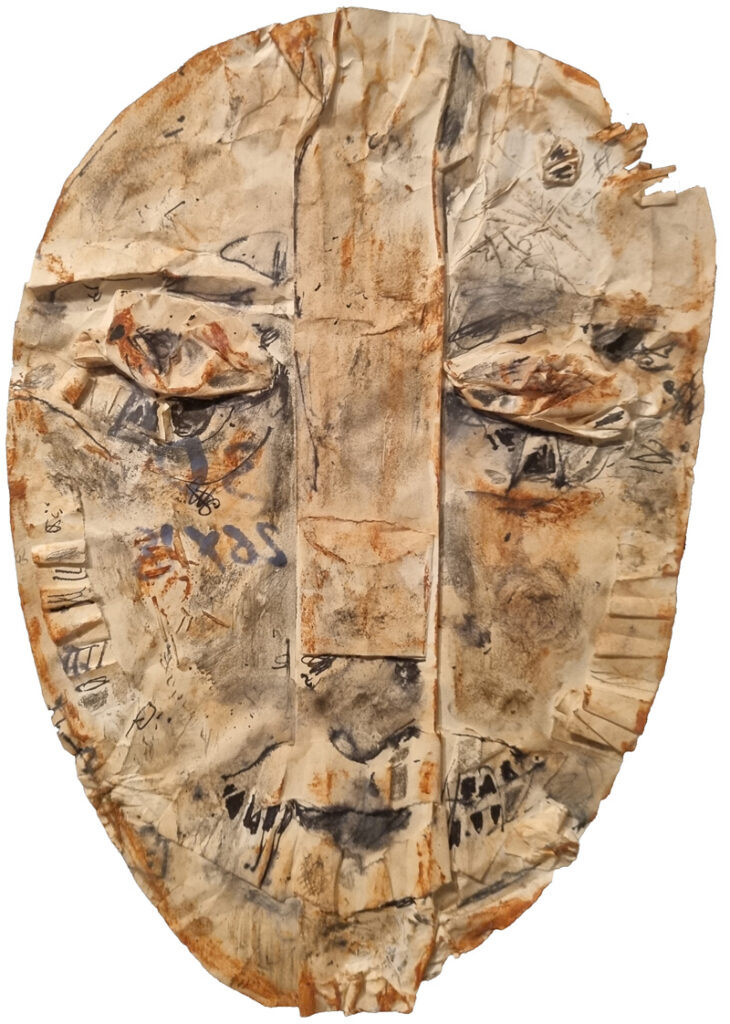

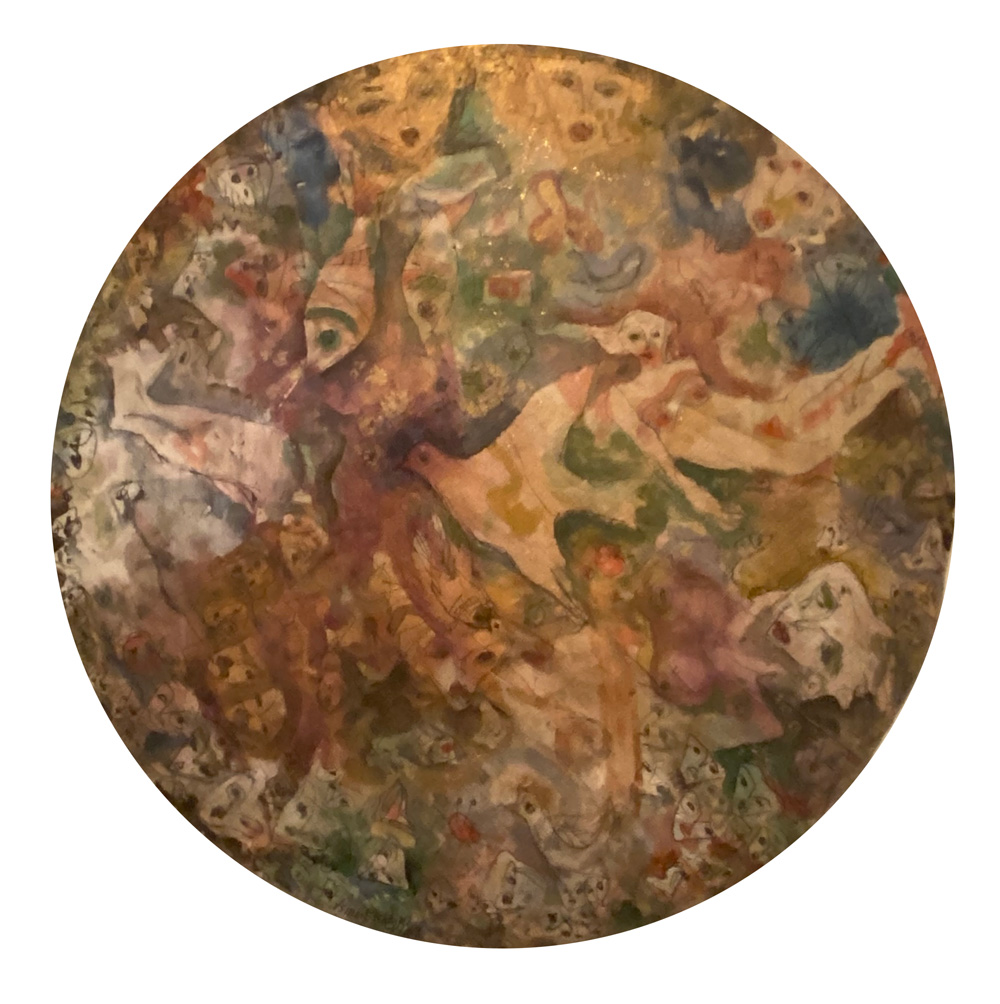
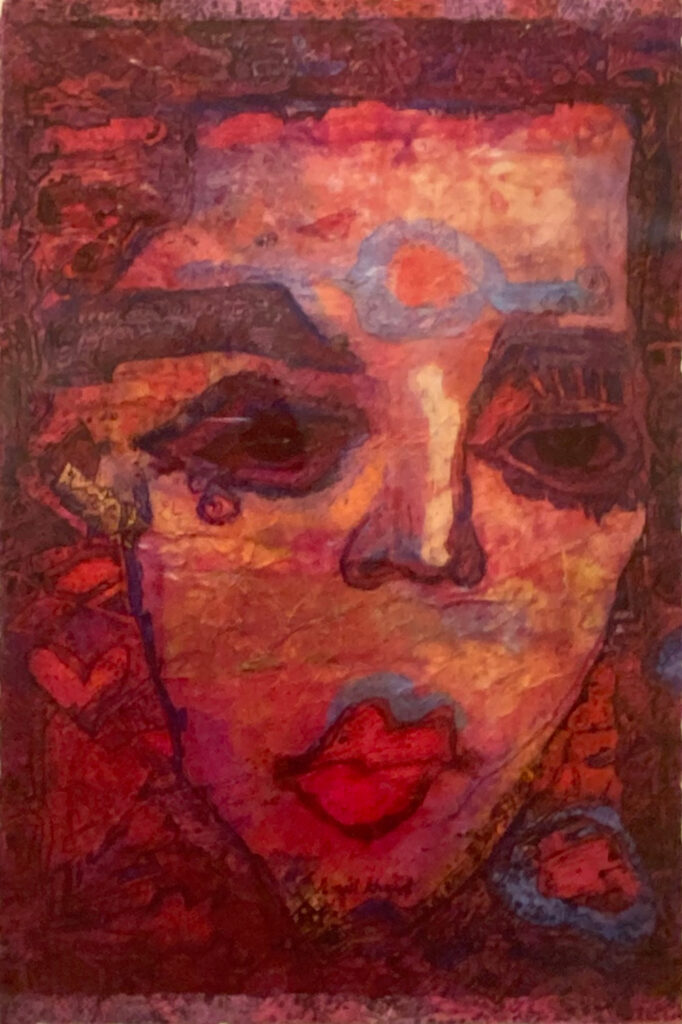
Ismail Khayat, the Arab artist, artworks were recently featured at the Sharjah Art Museum as a part of the Lasting Impressions series, and was co-curated by Alya Al-Mulla and Hayas Khayat, who chose more than 100 artworks to signify the artist’s rich production and the vastly varied methods and techniques he adopts, aiming to capture the images and disguised scenes laying deep in his mind and sentiment, then approaching them visually and technically following his own methods and practices.

So early on, Khayat embarked on his journey by painting scenes and elements of daily life in Khanaqin. He went on realistically depicting them on house walls and street light poles using some pieces of coal and the what’s remaining of his older brother’s pencils, up until he went to school in Baqubah, where he continued working on drawing and producing paintings, in which he depicted Alwand River and the bridge above it, in addition to portraying alleys and houses with all of their details, especially the doors and windows. Perhaps this cohesion between the artist and the place, which was established at an early stage of his life, has marked his sentiment with an immersive flow of details and scenes that later shaped his artistic element and culminated to converge, within his soul, as an iconic and mosaic matter, one that will be prevalent in his subsequent artworks.
The place, the human being, and living creatures were all of meaning to the artist, which is clearly seen in his work on different raw materials and mediums such as paper, fabric, cardboard, textile, and stones. He took steps on the long creative road, and over six decades, he sought to capture the images pouring down his inner self, declaring their speculated existence across visual surfaces. In his early works, he celebrated the river and the fish within, and praised nature and its plains, mountains, trees, birds, and wild animals. Later, during his studies at the Teachers Institute in Baghdad, he discovered his passion for architecture and its inspiring constructional element, and for the narrow alleys and mosques, up until he came upon an expressional formula that distinguished his art project via painting and producing masks, thus marking the most distinctive stage in his art career, which enabled him to gather all of his thoughts, humane stances, cultural elements, dreams, and passions into the surfaces of the masks with their various materials.
A notable presence among Khayat’s various components was allotted for Kurdish women, who were renowned for their bravery, strength, beauty, and delicacy. In a series of paintings featuring Kurdish women, he emphasizes his love and admiration for his mother, wife, and all the strong women capable of defeating the harsh bitter reality, the reality that his Kurdish lands suffered through in the ancient days, especially Halabja and the chemical attack that took place in it back in 1988, thus leaving a deep wound filled with rage and agonizing pain due to this atrocity and genocidal campaign against the people there.
The artist’s method of using stones as artistic materials is one of his novel and special experimental practices, thus earning him the title of “Stone’s man” within the fine art society, as he considered stones to be a symbol of land and place, for their sanctity and the sense of belonging to them.
The artist’s latest artworks were particularly themed with the colors white and black, however, colors were not completely absent in the artist’s productions, which were represented in his use of colorful pens, in addition to watercolor and oil paints.
His work had the distinguishing feature of mixing colorful Chinese inks with many other materials, in addition to adding glue to paper clays, which provided his paintings with their distinctive feature and variant theme within the Iraqi fine art scene that was all rich and varied back at the time in Baghdad.
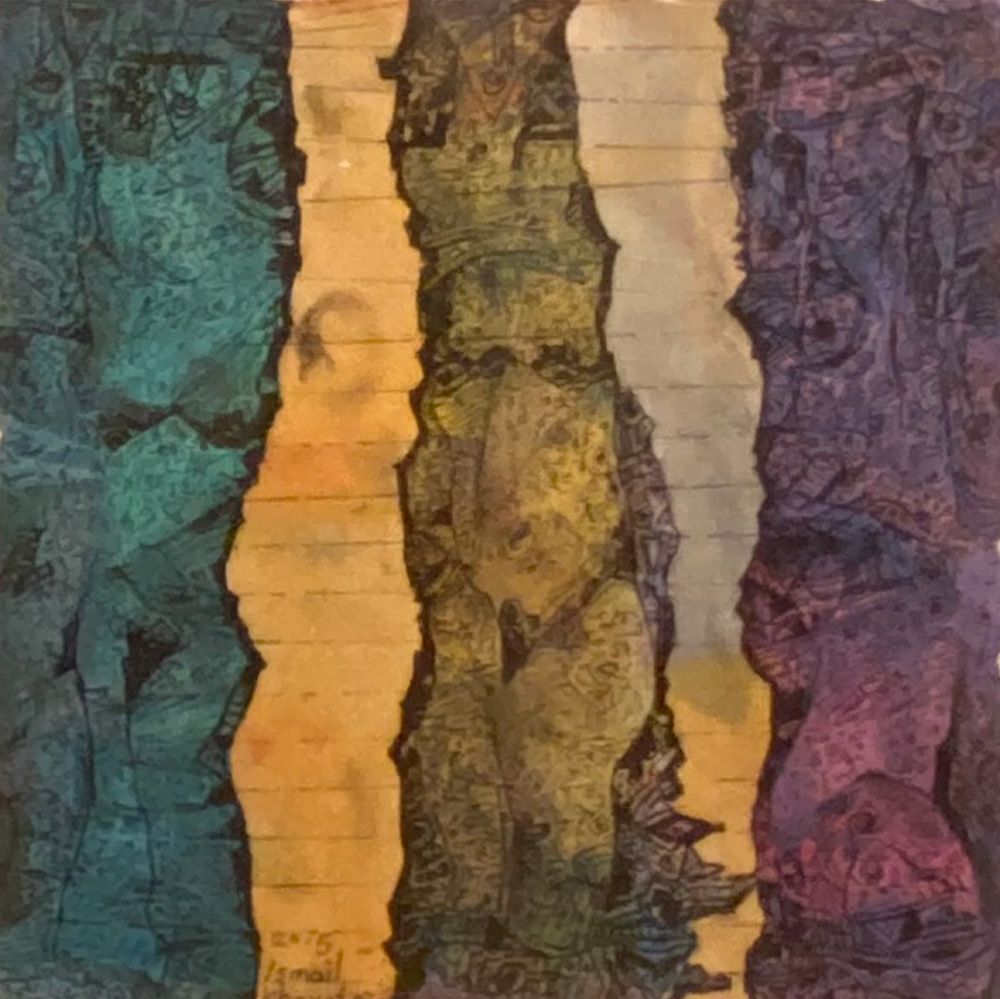
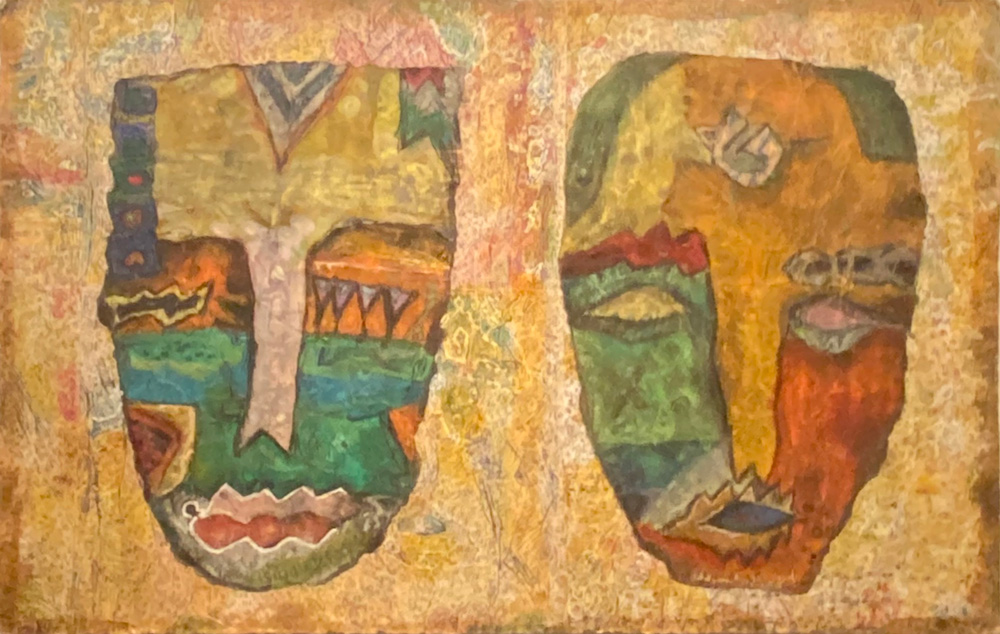


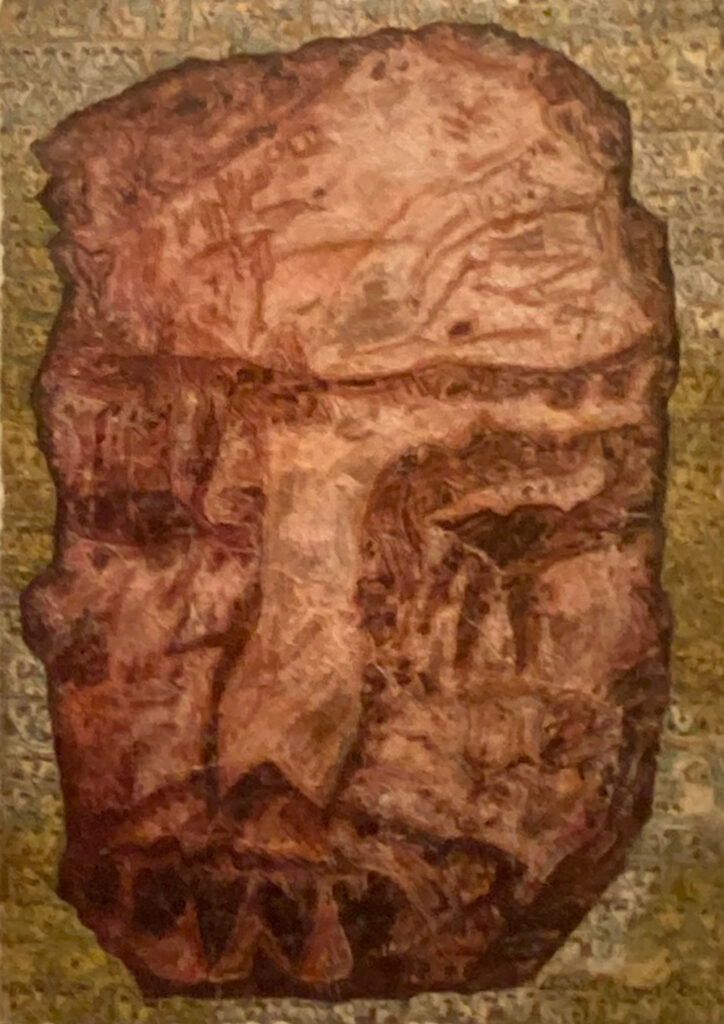
Khayat’s artworks clearly suggest how he benefited from and utilized his father’s craft, who used to work in tailoring. We can also touch on the influence of such delicate work, a craft that requires not only skill, but also taste and disciplined designing capability. This is the reason we notice the strong presence of the assembled pieces of work and fabrics in Ismael Khayat’s artworks. Another resemblance is seen in the way the painting is embroidered, and the way elements and articles are assembled much like spinning and textile crafts that are vibrant with symbols, drawings, and numerous details.
Apart from depicting realistic and daily life scenes, we can also see the artist’s expressionism painting and abstract surfaces, in addition to symbolic practices, as if he is pushed by an inner force that pushes him to go as far as can be so that the final piece would come out identical to the image he had in mind, the one that represents his personal belief on how should a work of art be at last. This is especially since the artist proclaimed, on multiple occasions, that he often started working on those paintings without any clue about the nature of the artwork that he was to produce, he even kept going, free with no restraining, relying only on the shapes jammed in his mind, with absolutely no idea how the final product will come out until he finished the piece and projected on the visual surface. Such practice can be observed with many artists, abstract expressionists, in particular, foremost among them Willem de Kooning and Jackson Pollock and others.
Meanwhile, Ismael Khayat’s masks, which occupy the biggest portion of the exhibit, remain to be his own private messages. Those messages were the product of a long experience and evident expertise, and were coded via images embroidered with his own emotions, feelings, and inner screams, which were always calling for the noble human existence, and his huge gamble on claiming his desired status in life, and getting it in spite of what life might throw on humans, and no matter what consequences it brings in their lives, or catastrophic disasters it pushes, so much that silence seems no longer an option, especially for those free creative souls, most and foremost fine artists, and all those who pursue the humane issues and the problems of their nations and make them their mission.
Most of the masks came as an individual piece, in which the mask dominates the visual scene and takes control of it. While in others, the masks appear to be the visual scene itself, especially those masks that are made out of papers and collages processed with adhesives and other materials added by the artist, who also cut the outer corners and some of the interior spaces within the mask, and utilized his emotional intense handcrafting that can shake the flat papers and give them their winding irregular shapes so that they can convey the meaning they’re meant to convey, and so they can enjoy the particularity of existing within a work of art by a renewing artist and within the Iraqi contemporary scene earlier at the time.
Among the artist’s displayed oil paintings, two stand out. One belongs to a collection that Khayat named “Approaching Homeland”, this painting is untitled and was painted back in 1977, and the abstract method that uses pyramid-shaped formations is most prevalent, along with the dominant geometric creation and designing spirit. The artist managed to distribute his main elements within the painting’s foreground while weaving the background from scenes of parallel lines going into different lanes and areas without disrupting the painting’s main elements that lay at the front. The second one is called “Compassion via Faces”, which the artist painted in 1980 using oil paints on wood. The painting is divided into a group of geometrical sections. The sections on the top and at the bottom contain a group of abstract faces that have diverse features and configurations, and in between those two sections, there is an abstract horizontal scene filled with consecutive curved lines following the presented shapes, which is perhaps made by the artist to represent one of the natural scenes incubated deep inside him.
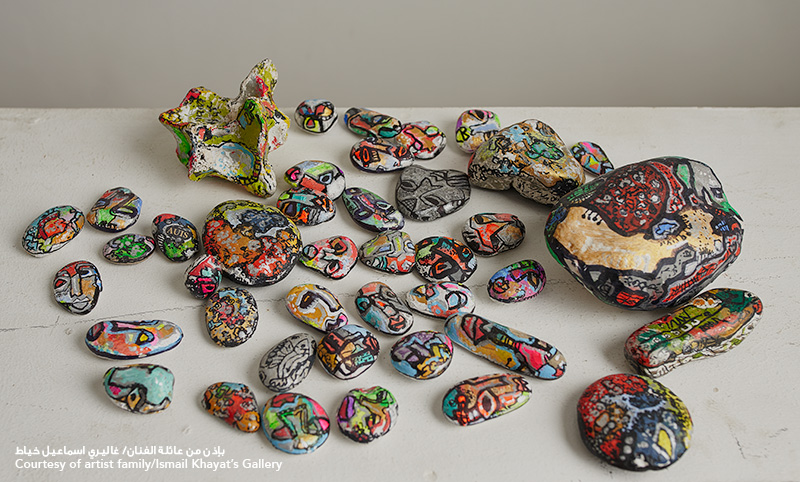
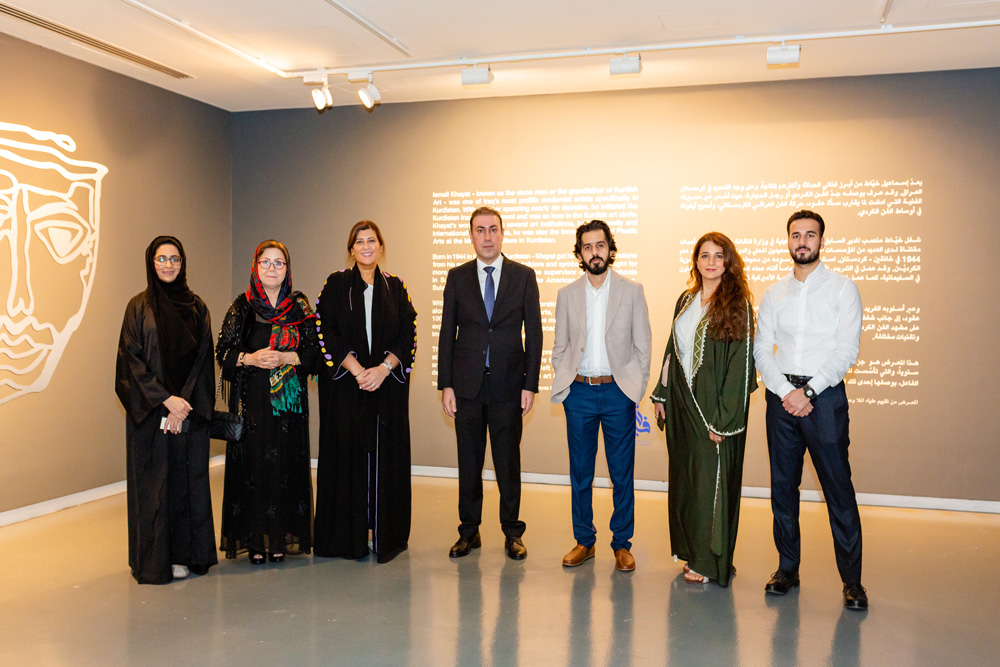
Poet, novelist, visual art researcher, received a master's degree in art history from Cairo Academy of Fine Arts in 2008, and a bachelor's degree in expressive arts from the Decorative Department of the Minya Academy of Fine Arts in 1996.
He also chaired the International Intellectual Seminars Committee for the Sharjah Calligraphy Forum, the Islamic Arts Festival, and the Sharjah Prize for Fine Critical Research at the Arts Department in the Department of Culture and Information in Sharjah until 2012.


